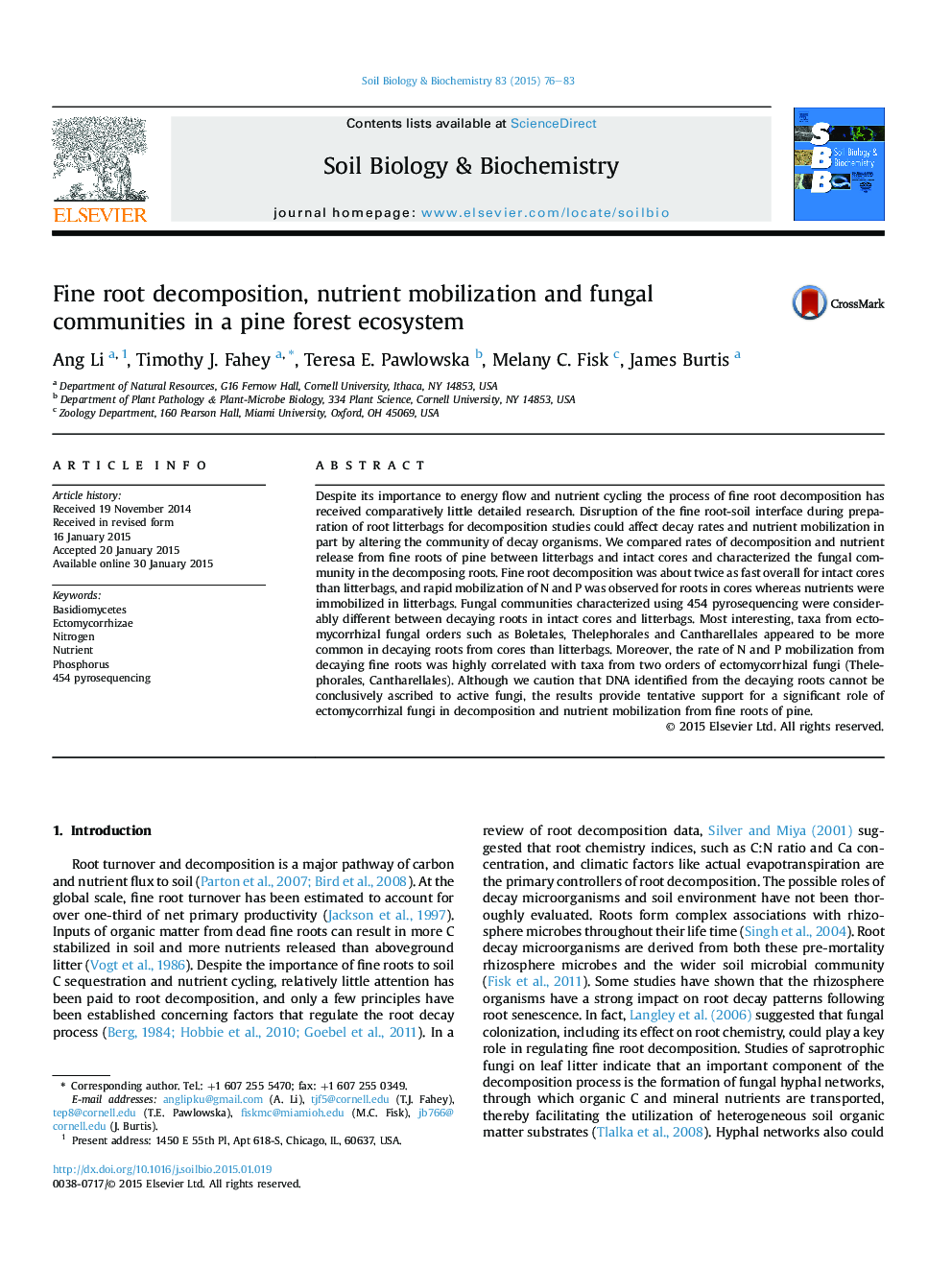| Article ID | Journal | Published Year | Pages | File Type |
|---|---|---|---|---|
| 8364265 | Soil Biology and Biochemistry | 2015 | 8 Pages |
Abstract
Despite its importance to energy flow and nutrient cycling the process of fine root decomposition has received comparatively little detailed research. Disruption of the fine root-soil interface during preparation of root litterbags for decomposition studies could affect decay rates and nutrient mobilization in part by altering the community of decay organisms. We compared rates of decomposition and nutrient release from fine roots of pine between litterbags and intact cores and characterized the fungal community in the decomposing roots. Fine root decomposition was about twice as fast overall for intact cores than litterbags, and rapid mobilization of N and P was observed for roots in cores whereas nutrients were immobilized in litterbags. Fungal communities characterized using 454 pyrosequencing were considerably different between decaying roots in intact cores and litterbags. Most interesting, taxa from ectomycorrhizal fungal orders such as Boletales, Thelephorales and Cantharellales appeared to be more common in decaying roots from cores than litterbags. Moreover, the rate of N and P mobilization from decaying fine roots was highly correlated with taxa from two orders of ectomycorrhizal fungi (Thelephorales, Cantharellales). Although we caution that DNA identified from the decaying roots cannot be conclusively ascribed to active fungi, the results provide tentative support for a significant role of ectomycorrhizal fungi in decomposition and nutrient mobilization from fine roots of pine.
Related Topics
Life Sciences
Agricultural and Biological Sciences
Soil Science
Authors
Ang Li, Timothy J. Fahey, Teresa E. Pawlowska, Melany C. Fisk, James Burtis,
